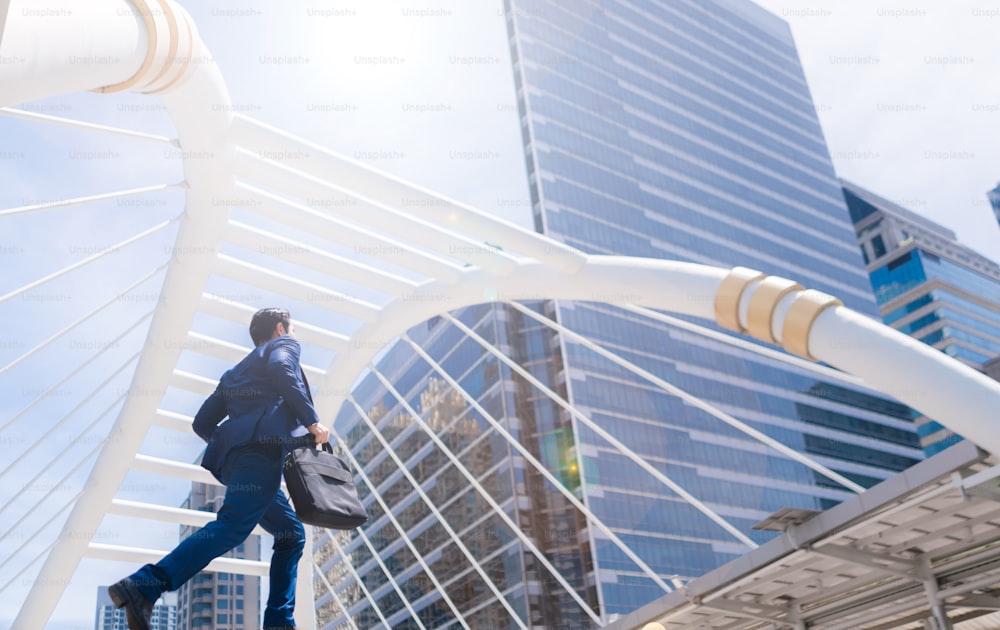Is it Illegal to Climb Buildings
The concrete canyons of our cities, with their towering skyscrapers and historic landmarks, have long held a magnetic allure for the adventurous at heart. In recent years, an underground subculture has emerged where individuals seek to conquer these urban giants by scaling their walls, reaching breathtaking heights, and capturing stunning photographs that dare to defy gravity. This phenomenon, known as building climbing or urban exploration, has gained traction on social media, captivating the imaginations of countless thrill-seekers.
However, as the popularity of building climbing has risen, so too have questions about its legality. Is it illegal to climb buildings? What are the legal ramifications of this exhilarating but often risky pursuit? The answers to these questions are not as straightforward as they depend on a complex interplay of local and national laws, property rights, building codes, and individual intent.
Building Climbing Culture
The culture of building climbing, often referred to as urban exploration (urbex), is a multifaceted phenomenon that has gained traction worldwide. It encompasses values, motivations, and ethical considerations, distinguishing it from traditional sports and outdoor activities. Understanding this culture is essential for anyone looking to grasp the mindset and motivations of those pursuing this daring pursuit.
1. The Allure of Urban Exploration
Urban exploration holds an irresistible allure for many individuals. Its attractions include:
- Adventure and Adrenaline: Climbing buildings offers a rush of adrenaline that few other activities can match. Scaling the heights of towering skyscrapers or navigating hidden underground tunnels provides a sense of excitement and adventure.
- Exploration and Discovery: Urban explorers desire to discover hidden or forgotten places within their urban landscapes. Abandoned buildings, underground tunnels, and derelict structures hold a mystique that beckons them to explore the unknown.
- Photography and Art: Many climbers are passionate about photography and view urban exploration as an opportunity to capture stunning and unique images. Abandoned spaces often provide hauntingly beautiful backdrops for their art.
2. The Ethics of Climbing Buildings
While the thrill of urban exploration is undeniable, ethical considerations loom large within the community. These considerations include:
- Respect for Property: Ethical climbers strive to minimize damage to properties they explore. Vandalism and theft are strongly condemned within the community.
- Safety Consciousness: Safety is paramount in building a climbing culture. Climbers typically emphasize the importance of proper gear, training, and risk assessment to minimize accidents.
- Preservation vs. Documentation: Tension exists between those who believe in preserving historic sites and those who aim to document them before they are lost to time or development. This debate informs the actions of urban explorers.
- Secrecy and Anonymity: Some explorers maintain a secretive or anonymous online presence to protect their identities and avoid potential legal consequences.
3. Prominent Building Climbers and Their Experiences
The culture of building climbing has its celebrities, individuals who have gained recognition for their daring exploits. These climbers often share their experiences through social media and documentaries, offering insights into their motivations and challenges.
- Examples of Prominent Climbers: Names like Alain Robert, the “French Spider-Man,” and rooftopper Vitaliy Raskalov have become synonymous with building climbing. Their feats have captured international attention.
- Documentary and Media: Films and documentaries, such as “Man on Wire” and YouTube channels dedicated to urban exploration, provide a platform for climbers to share their experiences and perspectives.
Is it illegal to climb buildings in the US?
Yes, it is generally illegal to climb buildings in the US. This is because it is considered trespassing, a crime in most jurisdictions. Trespassing is the act of entering someone else’s property without their permission. Sometimes, climbing a building may be considered disorderly conduct or a public nuisance.
There are a few exceptions to this rule. For example, if the owner or manager invites you to climb a building, it is not trespassing. Additionally, some buildings have designated climbing areas open to the public. However, even in these cases, checking the rules and regulations before you climb is essential.
Here are some of the reasons why climbing buildings is illegal in the US:
- It is a safety hazard. Climbing buildings can be dangerous, especially if you are not trained or experienced. There is a risk of falling, getting injured, or even dying.
- It can damage the building. Climbing on buildings can damage the roof, walls, or other parts of the structure. This can be costly for the building owner to repair.
- It can be disruptive to others. Climbing buildings can be a nuisance to people working or living there. It can also be scary for people who see you rising.
If caught climbing a building in the US, you could be arrested and charged with trespassing. You may also be fined or even jailed. In some cases, you may also be liable for any damage you cause to the building.
Legal Limits to Climbing Skyscrapers
Climbing skyscrapers is subject to various legal limitations and restrictions, and it’s essential to understand these boundaries to avoid legal consequences.
1. Trespassing Laws
Trespassing is a fundamental legal issue when climbing skyscrapers. It involves entering a property without the owner’s permission, which is illegal in most jurisdictions. The severity of the consequences can vary depending on local laws and the circumstances of the trespass. Climbers may face criminal charges if caught trespassing.
2. Building Codes and Regulations
Skyscrapers are constructed following strict building codes and regulations to ensure public safety. Climbing a skyscraper can breach these codes by creating unsafe conditions, both for the climber and potentially for others. Violating building codes may lead to legal repercussions.
3. Property Rights
Property owners have legal rights over their buildings, which include controlling access to their premises. Climbing a skyscraper without explicit permission infringes upon these property rights and can result in legal action by the building owner.
4. Public Safety
Climbing skyscrapers can jeopardize public safety. Falling objects or climbers themselves pose risks to pedestrians and nearby structures. Engaging in this activity without proper safety measures or disregarding public safety may result in legal consequences.
Physical Limits to Climbing Skyscrapers
Aside from the legal boundaries, there are also significant physical limitations when climbing skyscrapers.
1. Height and Physical Endurance
Skyscrapers are incredibly tall structures, often hundreds of meters high. Climbing such heights requires exceptional physical endurance, strength, and climbing skills. Oxygen levels decrease at higher altitudes, posing health risks to climbers.
2. Structural Integrity
Skyscrapers are engineered to withstand various forces, including wind, earthquakes, and vibrations. Climbing a skyscraper can introduce unexpected stresses to the structure, potentially compromising its integrity or stability. This can endanger not only the climber but also occupants and nearby structures.
3. Safety Hazards
Skyscrapers are riddled with safety hazards, such as exposed electrical wires, slippery surfaces, and extreme weather conditions at higher altitudes. Climbers must be vigilant and equipped with appropriate safety gear to mitigate these risks.
4. Legal Consequences
Climbing skyscrapers often carry legal consequences, as discussed earlier. These consequences can include fines, criminal charges, civil lawsuits, and damage to one’s reputation. Climbers should weigh the potential legal ramifications before attempting such endeavors.
Safety and Risks in Building Climbing
Building climbing, or urban exploration, is an exhilarating pursuit, but it is not without its share of safety considerations and inherent risks. Climbers who engage in this activity must be acutely aware of these factors to ensure their well-being and the safety of others.
Physical Risks of Climbing Buildings
1. Falling Hazards
Climbing tall structures, especially skyscrapers, poses a substantial risk of falling. Even with safety equipment, the potential for slips or equipment failure is ever-present, particularly in adverse weather conditions. Falls from great heights can result in severe injury or even death.
2. Structural Instability
Buildings, especially abandoned or neglected ones, can suffer from structural instability. Climbers may encounter weakened floors, crumbling walls, or deteriorated support structures. Ignoring these signs of instability can lead to accidents and structural collapses.
3. Environmental Hazards
Climbing can expose individuals to various environmental hazards, such as extreme temperatures, high winds, rain, or snow at elevated heights. These conditions can compromise climbers’ safety, making it essential to prepare for the elements.
Legal Risks vs. Personal Risks
1. Legal Consequences
Climbing buildings often involves trespassing onto private property, which can lead to criminal charges and civil liabilities. Climbers may face fines, imprisonment, or damage to their reputation if caught. Legal consequences vary by location and the severity of the trespass.
2. Civil Liabilities
Climbing can result in unintentional damage to the property or injury to others. In such cases, climbers may face civil lawsuits, potentially requiring them to pay for damages or medical bills.
3. Personal Risks
Climbers risk personal harm not only due to the physical dangers but also due to the psychological stress associated with evading security measures and the fear of legal consequences. These factors can affect climbers’ mental well-being.
Responsible Climbing Practices
`1. Safety Equipment
Proper safety equipment, including harnesses, helmets, and ropes, is essential for mitigating physical risks. Climbers should invest in high-quality gear and ensure it is regularly inspected and well-maintained.
2. Training and Skill Development
Climbers should acquire the necessary skills and knowledge to navigate various climbing scenarios safely. This may involve formal training, mentorship, or self-education. Beginners should start with less challenging climbs to build experience.
3. Risk Assessment
Careful risk assessment is crucial before attempting any climb. Climbers should evaluate the condition of the building, environmental factors, their own physical and mental state, and potential legal consequences.
4. Respect for Property and Safety
Ethical climbers prioritize respect for property and the safety of themselves and others. They avoid causing damage, interfering with security systems, or endangering public safety.
5. Legal Awareness
Climbers should be aware of the legal landscape in their area and understand the potential consequences of trespassing and property damage. This knowledge can inform their decisions and actions.
Conclusion
Climbing skyscrapers, the daring pursuit known as urban exploration, is a captivating yet perilous endeavor. As we have explored in this blog post, there are significant legal and physical limits to this activity, each carrying its own set of challenges and consequences. In conclusion, it is crucial to reflect on the multifaceted nature of building climbing, acknowledging both its allure and its inherent risks.
Throughout this discussion, we have uncovered the legal boundaries that climbers must navigate. Trespassing laws, property rights, building codes, and public safety considerations all play a role in shaping the legality of building climbing. Ignoring these legal limits can lead to criminal charges, civil liabilities, and damage to one’s reputation.
On the physical front, the risks associated with building climbing are undeniably daunting. The potential for falling from great heights, encountering structural instability, and facing environmental hazards underscores the need for meticulous safety precautions. Climbers must be equipped with the right gear, undergo appropriate training, conduct thorough risk assessments, and respect the properties they explore.



















